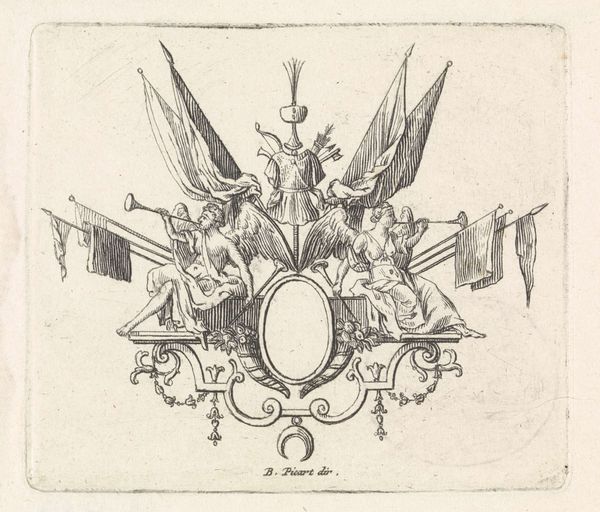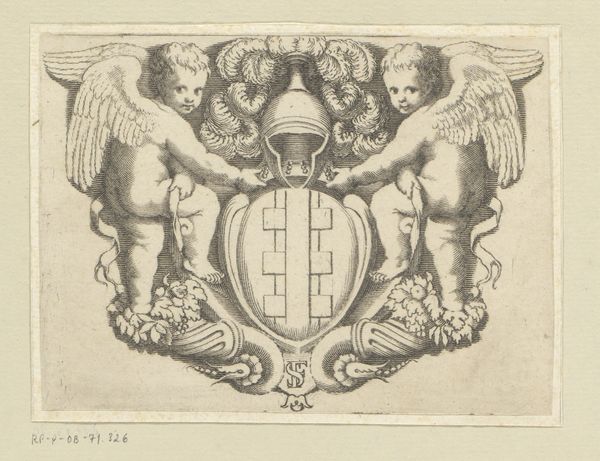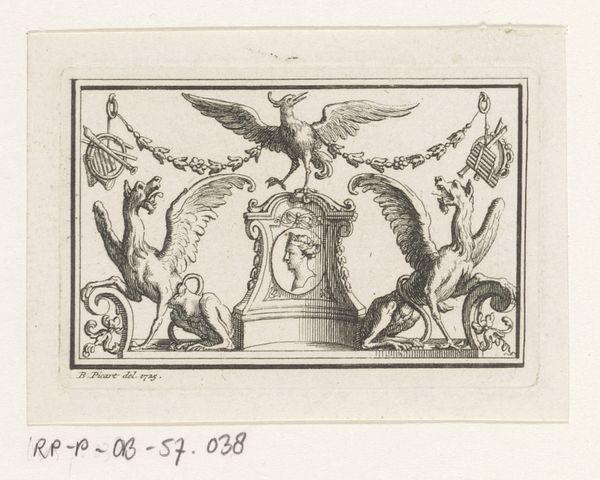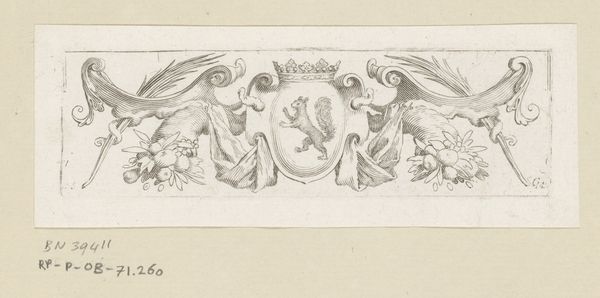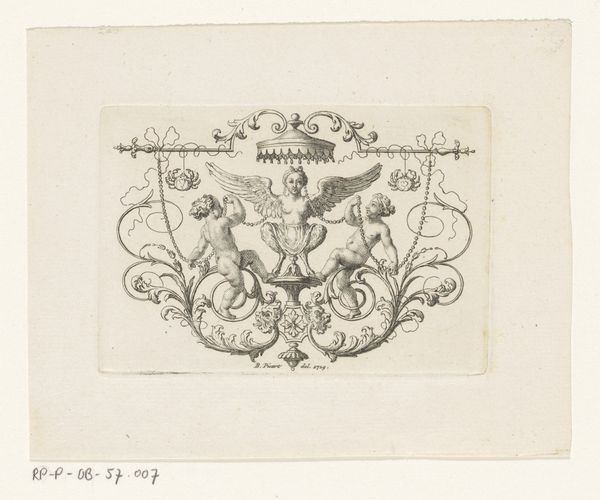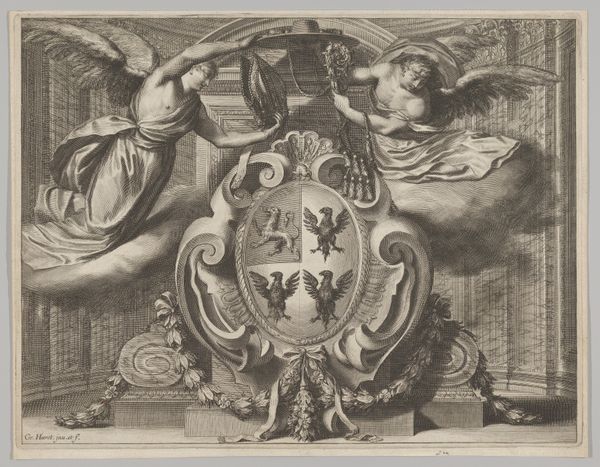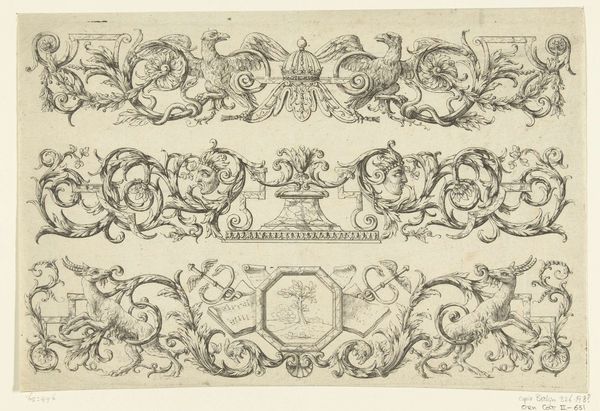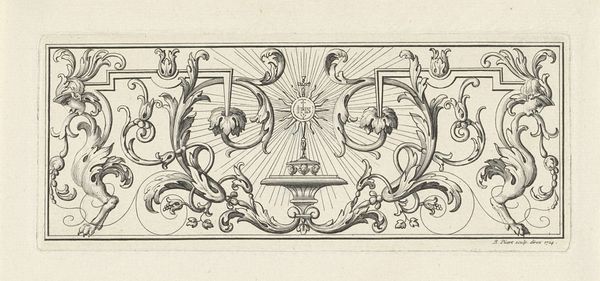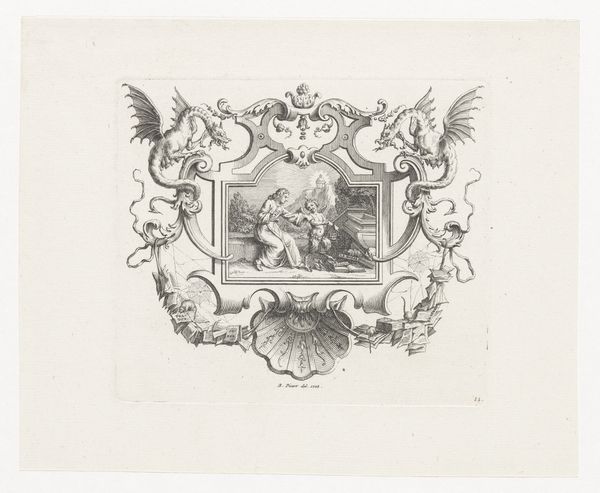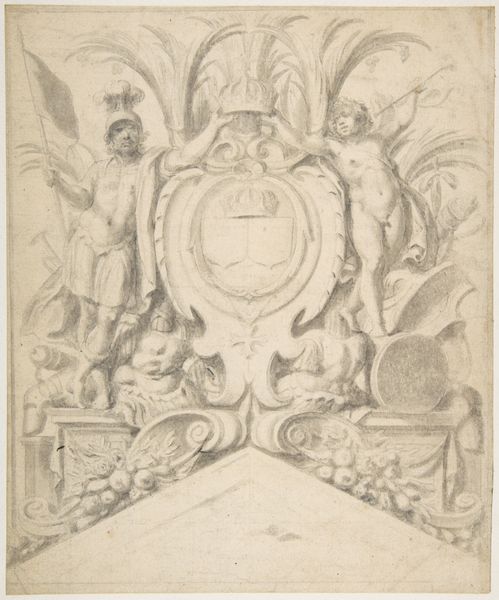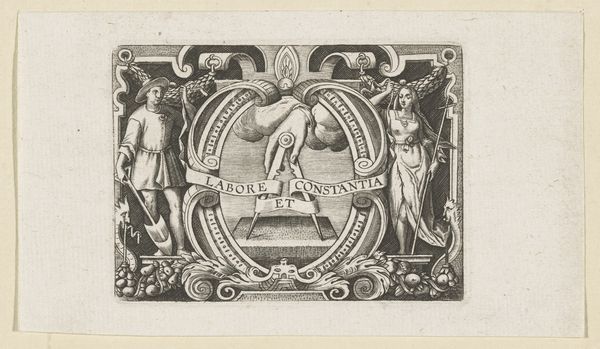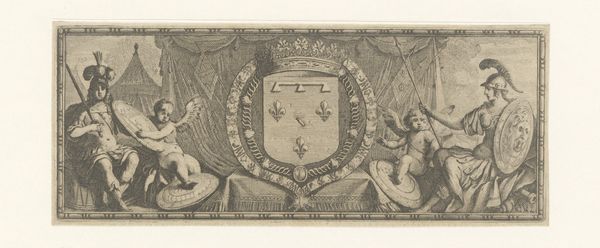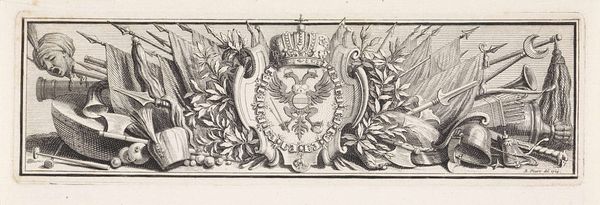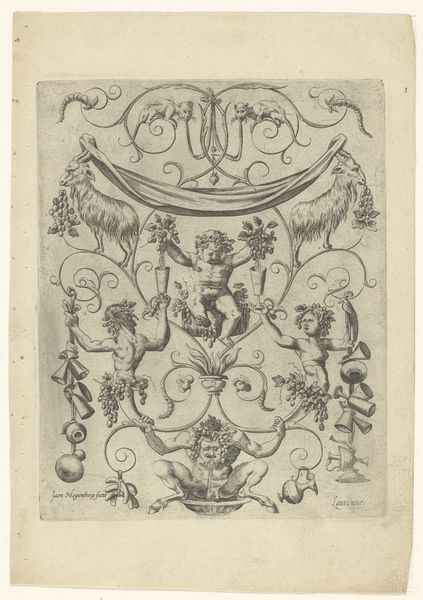
print, engraving
#
baroque
# print
#
line
#
decorative-art
#
engraving
Dimensions: height 52 mm, width 182 mm
Copyright: Rijks Museum: Open Domain
Curator: This delicately engraved print, titled "Fries met monogram Karel IV," was crafted by Sébastien Leclerc I before 1664. It's part of the Rijksmuseum's collection, a testament to Baroque artistry in line and decoration. Editor: My first thought? Opulence restrained by monochromatic execution. The sheer amount of detail is astounding given the medium. The repetition and balance speak to power, but the draftsmanship seems so precise and meticulous. Curator: Indeed. Consider the monogram at its heart, likely referring to Charles IV. We see it wreathed in laurel, a symbol of victory and excellence, and topped with plumes that hint at regality. Flanking the central motif are cannons and what appear to be military banners and drums— clear allusions to power, specifically of military might. Editor: Which speaks volumes about how power was asserted in the 17th Century. The print medium also hints at this; this decorative artwork, despite its fine line engraving and clear decorative style, must have been made to disseminate imagery that upholds monarchic power. After all, prints were relatively reproducible commodities. It gives us insight into print shops as factories and image-making as propagandizing! Curator: An excellent point. I see how the deliberate inclusion of objects associated with military power suggests Leclerc's investment in portraying Charles IV's dominance, using a classical visual language of wreaths, scrolls, and stylized lettering to amplify the cultural weight of the subject. These prints have a powerful and pervasive presence despite their being just paper and ink. Editor: Well, exactly. And seeing the labour of the piece in terms of materials emphasizes their economic exchange, consumption of monarchy and military success made simple and beautiful through meticulous design. What does all this heraldry actually produce materially? The artwork helps emphasize power relations embedded in early modern European commerce and rule. Curator: That connection between material, symbol, and societal structure reveals a rich interplay that echoes beyond the lines etched onto this paper, I think. Thank you, for offering such a dynamic view on symbols, and how the materiality of art is also imbued with power! Editor: And thank you for shedding light on this engraving’s place in visualising continuity in history. Fascinating.
Comments
No comments
Be the first to comment and join the conversation on the ultimate creative platform.
